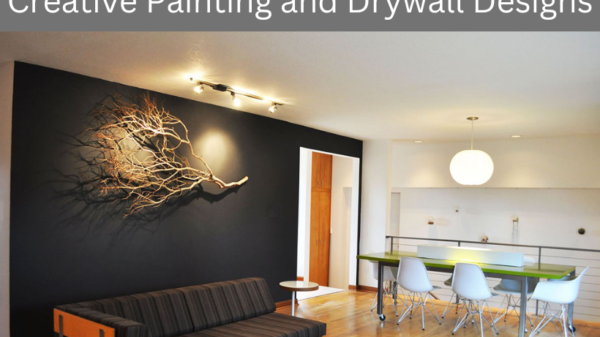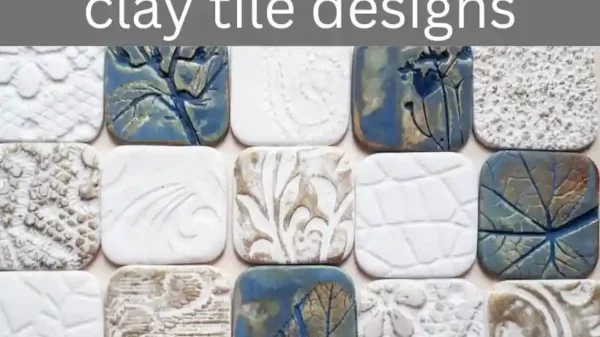Sheet metal walls are becoming a common option for commercial, industrial, and residential settings. They are a great choice for both exterior and interior design because of their strength, adaptability, and stylish appearance. The types, advantages, uses, installation procedures, and maintenance advice of sheet metal walls are all covered in this guide.
What Are Sheet Metal Walls?
Sheet metal walls are composed of metal sheets made of copper, steel, or aluminum. These sheets provide a modern and useful appearance when used as wall panels or covers. Different treatments, designs, and coatings can be applied to sheet metal walls to meet specific design specifications.
Types of Sheet Metal Used for Walls
1. Aluminum Sheet Metal

Aluminum is perfect for both indoor and outdoor applications since it is lightweight, corrosion-resistant, and easy to work with.
Advantages:
- resistant to rust, even in moist conditions.
- lightweight and simple to set up.
- Brightness is increased by a reflective surface.
Best Uses:
Bathrooms, outside siding, and kitchens.
2. Steel Sheet Metal
Steel is frequently employed in industrial and contemporary building projects because it is robust and long-lasting.
Types of Steel:
- Zinc is applied to galvanized steel to stop rust.
- Stainless steel: Perfect for damp or high-traffic areas, it resists stains and corrosion.
- Cold-rolled steel: a clean, smooth surface for interior use.
Advantages:
- considerable tensile strength.
- resilient to wear and damage.
- For beautiful finishes, powder coating is an option.
Best Uses:
- Kitchens, industrial buildings, and external cladding.
3. Copper Sheet Metal
Over time, copper acquires a patina and has a classic, opulent look.
Advantages:
- antimicrobial qualities.
- richly finished and aesthetically pleasing.
- naturally impervious to rust.
Best Uses:
- Accent pieces, outside architectural features, and ornamental walls.
4. Zinc Sheet Metal
Over time, minor scratches can be repaired by zinc’s self-healing qualities, which make it durable and environmentally friendly.
Advantages:
- Sustainable and low maintenance.
- produces a natural patina that improves appearance.
- impervious to corrosion.
Best Uses:
- wall cladding, roofing, and ornamental elements.
5. Corrugated Sheet Metal

The wavy or ridged patterns give corrugated sheets their distinctive texture and strength.
Advantages:
- Strong but lightweight.
- visually unique.
- Installing it is simple.
Best Uses:
- external cladding, garages, and interiors in the industrial style.
6. Perforated Sheet Metal
Perforated sheets have holes or patterns punched into the metal, enabling a blend of functionality and design.
Advantages:
- permits light and ventilation.
- gives it a creative twist.
- keeps strength while losing weight.
Best Uses:
- Acoustic panels, dividers, and ornamental walls.
Applications of Sheet Metal Walls
There are many uses for sheet metal walls, ranging from functional uses to decorative improvements. Here are a few typical uses:
1. Interior Design
- Accent walls give living areas, workplaces, or retail establishments a contemporary or industrial vibe.
- Backsplashes: Often used in bathrooms and kitchens to provide a smooth, clean surface.
- Partitions: Stylish partitions used in public areas or offices.
2. Exterior Cladding
- provides aesthetic appeal while shielding buildings from the elements.
- long-lasting and resilient, even in harsh environments.
3. Industrial Settings
- offers a long-lasting and low-maintenance option for factories, workshops, and warehouses.
- impervious to corrosion, moisture, and impact.
4. Decorative Features
- panels with custom perforations for creative designs.
- For a distinctive aesthetic in opulent settings, use copper or zinc sheets.
Benefits of Sheet Metal Walls
1. Durability
- resistant to corrosion, weather, and impact.
- long lifespan, particularly after treatment or coating.
2. Versatility
- offered in a range of patterns, finishes, and materials.
- Ideal for traditional, industrial, or modern designs.
3. Low Maintenance
- Simple to clean with a moderate detergent and a moist cloth.
- resistant to yellowing and stains.
4. Fire Resistance
Because metal doesn’t catch fire, it’s a safer choice in places where fires are common.
5. Eco-Friendly
- Steel and aluminum are two examples of metals that can be recycled.
- Copper and zinc naturally break down without causing environmental damage.
6. Customizability
can be coated, sliced, or perforated to satisfy certain design requirements.
Installation Process for Sheet Metal Walls
Step 1: Measure and Plan
- Plan the arrangement of the sheet metal panels and take measurements of the wall.
- Take seams, overlaps, and trims into consideration.
Step 2: Prepare the Surface
- To provide adequate adhesion, the wall surface should be cleaned and smoothed.
- If the panels need structural support, install a framework made of metal or wood.
Step 3: Cut the Panels
- To cut the sheets to size, use a circular saw with a metal-cutting blade, a jigsaw, or tin snips.
Step 4: Attach the Panels
- Based on the material and intended use, fasten the panels to the wall with glue, rivets, or screws.
- Make sure everything is aligned correctly to prevent gaps or uneven surfaces.
Step 5: Finish the Edges
- To hide sharp edges and seams, use trim pieces or edging strips.
Step 6: Inspect and Clean
- Look for any sharp edges or loose panels.
- To get rid of trash or fingerprints, clean the panels.
Maintenance Tips for Sheet Metal Walls
- Frequent Cleaning: Wipe the surface with a moist cloth and a light detergent. Avoid abrasive cleaners that could scratch the metal.
- Check for Damage: Periodically check for loose screws, rust, or dents.
- Put on protective coatings: To keep things shiny and stop rust, use wax or a clear sealer.
- Fix Minor Damage: Use metal polish to remove scratches or swap out damaged panels as necessary.
- Prevent Water Accumulation: Ensure outside systems have enough drainage to prevent water damage.
Design Ideas with Sheet Metal Walls
- Industrial Chic: For an appearance reminiscent of a warehouse, utilize raw aluminum panels or corrugated steel.
- Modern minimalism: sleek, clean interiors with smooth stainless steel panels.
- Rustic Charm: Weathered or reclaimed metal for a rustic or vintage look.
- Luxury Touches: Copper or zinc panels for high-end, complex designs.
- Personalized perforated metal sheets for distinctive textures and patterns make artistic accents.
Conclusion
Sheet metal walls are a flexible option for a variety of applications because they provide the ideal balance of practicality and beauty. Sheet metal offers a timeless, fashionable, and useful solution for everything from contemporary interior accents to long-lasting exterior cladding. You can create a beautiful and durable design that complements your room by selecting the appropriate material, finish, and installation technique.
To guarantee the finest outcomes, evaluate your needs and get professional advice if you’re thinking of using sheet metal walls for your project. Sheet metal walls are a great investment in strength and style, whether you’re looking for a sleek, contemporary aesthetic or industrial durability.







